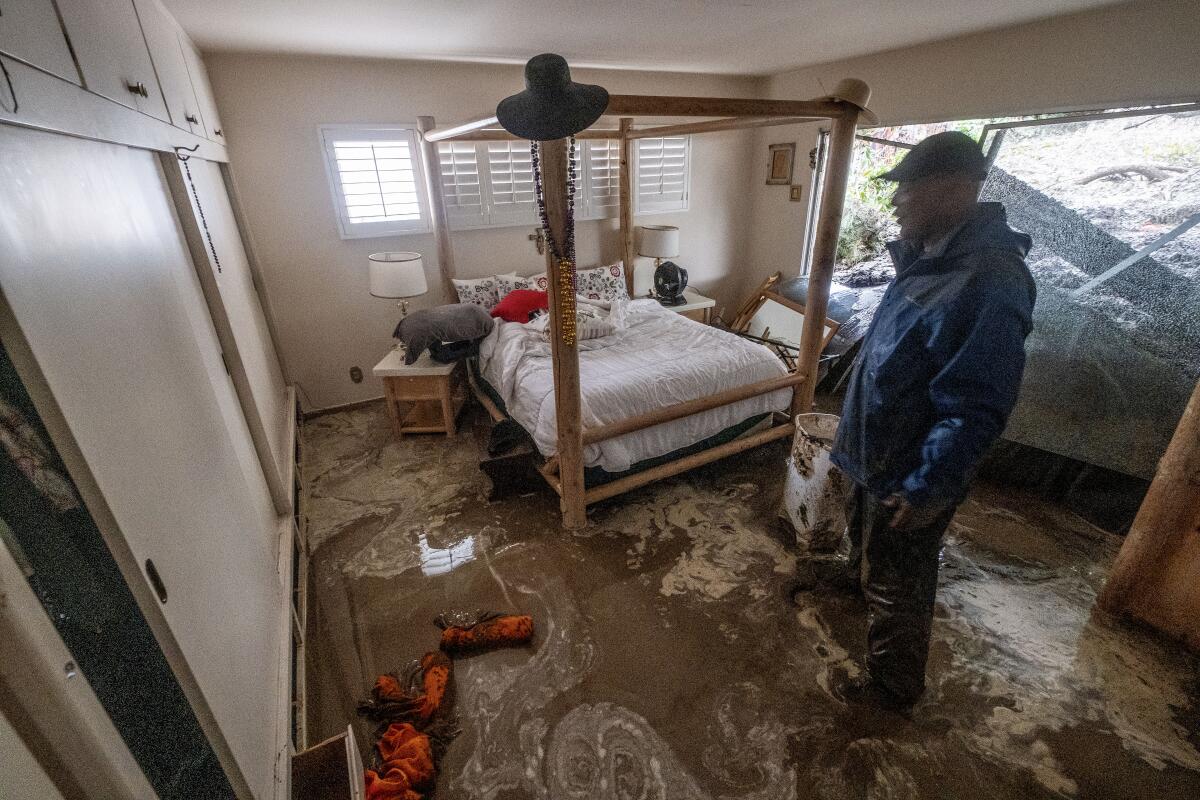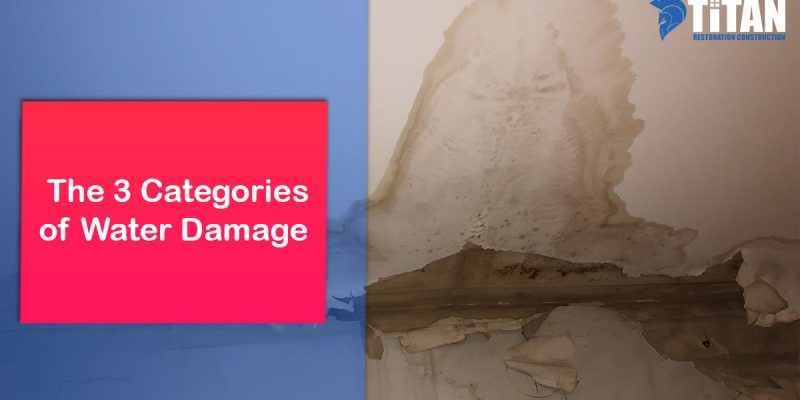The Process of Water Damage Clean-up: Ensuring Your Home Is Restored Properly
Water damage can be an overwhelming challenge for home owners, requiring a organized and meticulous cleanup procedure to bring back safety and functionality. Originally, a comprehensive evaluation is important to identify the extent of the damages and identify the appropriate removal actions. Following this, reliable water extraction techniques play an essential function in alleviating more damage. However, the subtleties of drying out, disinfecting, and ultimate repair are equally necessary and usually forgotten. Comprehending these phases can make a significant difference in the outcome of your home's restoration, motivating a closer look at what each action requires.
Evaluating the Damage
Upon uncovering water damages, the very first step is to extensively evaluate the degree of the impact. This preliminary evaluation is critical, as it assists determine the essential steps for efficient cleaning and restoration. Begin by inspecting the affected areas, consisting of wall surfaces, ceilings, floors, and individual items, to identify the resource of the water intrusion, whether from flooding, leaks, or condensation.
Recording the damage is essential for both insurance coverage claims and preparing remediation efforts - damage restoration services. Use photos and written notes to record the seriousness of the damage, noting any kind of afflicted architectural elements and materials. Pay special focus to areas that might not be immediately noticeable, such as behind walls and under rugs, as concealed moisture can cause further difficulties, including mold and mildew development
Additionally, evaluate the timeline of the water direct exposure. The longer the materials stay wet, the better the possibility for damage. Recognizing the duration of direct exposure will certainly educate the urgency of removal initiatives. Eventually, an extensive assessment prepares for a successful water damages cleanup procedure, guaranteeing that all influenced areas are resolved properly and completely.
Water Removal Strategies

Experts normally employ submersible pumps for larger quantities of water, which can promptly relieve flooding in cellars or other influenced areas. For smaller sized quantities, wet/dry vacuum cleaners are commonly made use of to remove residual wetness from rugs and difficult surfaces. In addition, making use of portable extractors permits targeted elimination in restricted spaces or areas with fragile products.
In circumstances of contaminated water, such as sewage or floodwater, advanced extraction methods may entail making use of biohazard devices to make sure security and compliance with wellness regulations. High-powered removal devices are important in minimizing water retention in architectural materials, which can result in mold development and architectural deterioration if not resolved promptly.
Ultimately, the effectiveness of water removal strategies plays a crucial duty in the total success of the water damage cleanup procedure, laying the foundation for subsequent remediation initiatives.
Drying and Dehumidification
When standing water has been effectively extracted, the next vital stage in the water damages clean-up process is drying out and dehumidification. This step is vital to avoid more damage and mold and mildew development, which can occur within 24 to 48 hours in wet settings.
To attain efficient drying out, specific tools such as industrial-grade air movers and dehumidifiers is used. Air movers circulate air across wet surfaces, enhancing evaporation prices, while dehumidifiers decrease humidity levels airborne, promoting a helpful setting for drying. The mix of these devices guarantees that wetness is drawn out from wall surfaces, floorings, and furnishings, enabling them to completely dry completely.
It is crucial to keep an eye on the drying procedure very closely. Experts commonly utilize wetness meters to analyze the wetness content in different home insurance water damage materials, ensuring that all impacted areas reach appropriate dryness levels. This meticulous method assists to avoid surprise moisture pockets that could result in structural damages or harmful mold development.

Cleaning and Sanitizing
After the drying out and dehumidification stage is full, the following essential action in water damages clean-up is cleansing and sanitizing the affected locations. This procedure is vital to protect against the development of mold, microorganisms, and various other virus that prosper in damp atmospheres.
The cleansing stage normally includes removing any type of particles, dirt, and pollutants from surfaces making use of specialized cleansing representatives. For tough surface areas, a mix of soap and water or business cleaning items is commonly utilized. Soft materials, such as furniture and rugs, may call for extra substantial cleaning techniques, consisting of steam cleansing or deep removal strategies, to make certain detailed cleanliness.

Disinfecting complies with cleansing, using EPA-approved anti-bacterials to get rid of harmful microorganisms. This action is essential, specifically in locations that may have entered into contact with floodwaters or sewer, as these resources can posture severe health dangers.
Additionally, it is essential to deal with any staying smells, which may need the usage of odor neutralizers or sophisticated strategies like ozone treatment. Appropriate cleansing and sanitizing not only recover the safety and health of your home but additionally lay the foundation for successful repair and fixings in subsequent phases of the water damage cleanup process.
Remediation and Fixings

Once the analysis is total, restoration initiatives can start. Additionally, floor covering may need similar attention, depending on the degree of water exposure.
It is crucial to involve knowledgeable restoration specialists during this process, as they possess the know-how to take care of complicated repairs successfully. Furthermore, they can aid minimize potential future concerns, such as mold development or structural instability, hence ensuring a secure and habitable living atmosphere. Inevitably, efficient reconstruction site here and repairs recover the home's integrity and boost its total worth.
Conclusion
In verdict, the process of water damages cleaning is critical for bring back a home to its pre-damage condition. Each phase, from assessing the damages to carrying out reliable water extraction techniques, adhered to by extensive drying out, sanitizing, and necessary repairs, plays a necessary role in guaranteeing safety and conformity with structure standards. Effective implementation of these actions not just alleviates immediate damage however additionally boosts the long-lasting stability and value of the residential or commercial property.
Water damages can be a complicated obstacle for house owners, requiring a meticulous and structured clean-up procedure to restore security and capability. Inevitably, a thorough assessment lays the foundation for an effective water damages clean-up procedure, guaranteeing that all impacted locations are addressed successfully and completely.
Reliable water extraction methods are vital in alleviating damage and stopping further issues adhering to a water intrusion event.In final thought, the procedure of water damages clean-up is crucial for find more information bring back a home to its pre-damage problem. Each stage, from examining the damages to carrying out reliable water removal methods, adhered to by comprehensive drying, sterilizing, and required repairs, plays an essential duty in making sure security and compliance with building criteria.
Comments on “Full-Spectrum Water Damage Repair Services for Complete Property Restoration”